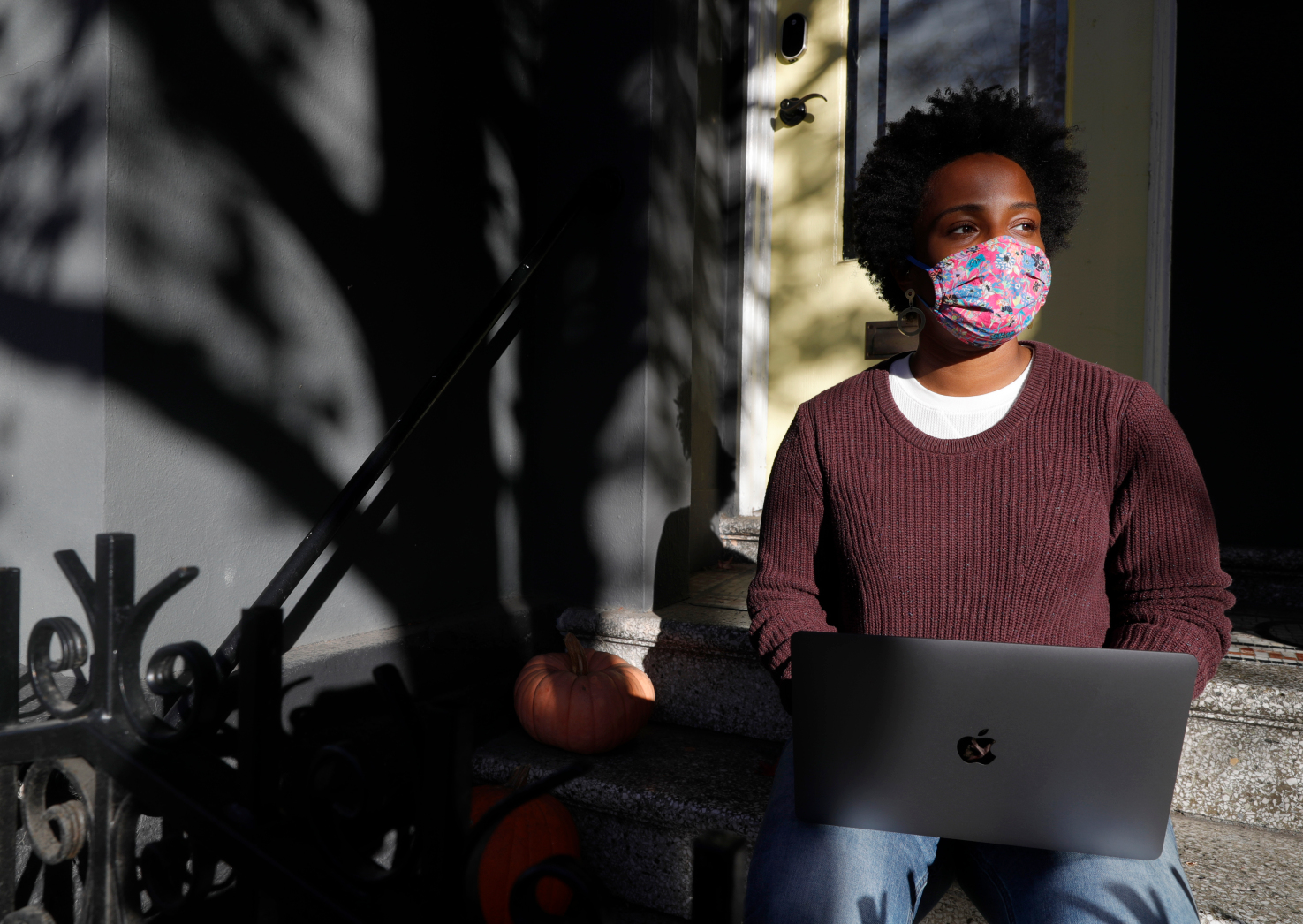Pandemic creates “weird boom time” for some Bay Area remote workers

Millions of California workers have faced at least one of two gut-wrenching situations this past year: losing their jobs or risking their lives by showing up in person at work during a pandemic.
But for the others — the “work-from-home” contingent — things have been, well, mostly fine.
“My career, knock on wood, is taking off,” said Penny Bailey, a recruiter at a San Francisco-based startup that builds software for online teamwork. Bailey got her new job and a raise three months into the pandemic. “I feel really good about my income, and that’s new for me. That contrast isn’t lost on me. I feel this weird guilt.”
The difference between those who can work from home and those who can’t is creating a new divide in the midst of the worst health and economic crises in decades. Remote workers typically make more, are less likely to be laid off, and don’t have to risk daily exposure like essential workers, about half of whom are low-wage employees.
“Remote work is the key differentiator of how you’re experiencing this crisis,” said Jeff Bellisario, executive director of the Bay Area Council Economic Institute.
Slightly over one in five American workers said they were able to work remotely last month, U.S. Bureau of Statistics shows. Remote workers were five times less likely to have lost their job during the pandemic, according to a spring Apartment List survey of more than 4,000 employees across the United States. In California, nearly one in five workers were without a job at some point in 2020 and one in 11 remain unemployed.
Bailey, who says she is thriving in a less-crowded city with cheaper rents, is thinking about leaving her two roommates to go live by herself. “For us [remote workers], things are becoming more accessible,” she said.
Still, she notices the lines forming each week across multiple blocks in front of the Mission Food Hub food pantry, one block from where she lives. “I find myself looking around in San Francisco during all of this, and the inequality here has never been so stark,” said Bailey, who has been “panic-donating” every month to local nonprofits.
“I’ve never been more aware of my own privilege,” said Bailey, who is part of the small minority of Black women in tech and makes slightly above $100,000 at her new job as a tech recruiter, which involves negotiating salaries with extremely well-paid workers. “It’s a weird business to be in when there’s so many people who have nothing.”
To be fair, initial waves of layoffs in March, when California became the first in the nation to shut down, didn’t completely spare tech and other office workers. But after an initial scare and a wave of layoffs as the stock market tanked, much of the Bay Area has witnessed a quick though targeted economic recovery, Bellisario said.
James Ly, a litigation lawyer for a mid-sized firmin San Francisco, got scared early in the pandemic that he would lose his job: Who needs a lawyer during a recession? But he didn’t. Instead, he started to get cold calls from recruiters wanting to offer him more work. Ly, who works from home in Emeryville, accepted an offer in October after negotiating a salary in the $100,000 range, a 30-percent pay bump from his previous job.
“I did well in the stock market,” said Ly, who added that he knows people who bought second or third homes during the pandemic. “It’s sort of a weird boom time.”
Employment and earnings in the professional and business sector are up from pre-pandemic levels in the San Jose, Santa Clara and Sunnyvale metropolitan area, and so are jobs in the financial sector across the state, according to the U.S. Bureau of Statistics. And though employment and incomes in the Bay Area information sector declined roughly 10 percent compared to last year, Bellisario said that might be driven by the loss of jobs outside of the traditional tech sector, like publishing and video/sound work.
Lawyers, IT specialists, coders, and others whose occupations didn’t rely on physical contact have largely been spared from economic collapse, experts say. Throughout the country, 65.5% of computer and math-related jobs are currently done from home, more than three times the national rate for all jobs, according to the Bureau of Labor Statistics. In the agriculture and service sectors, just 4 percent of jobs can be done remotely.
And the tech-heavy Silicon Valley has fared even better than most regions. Nationwide, 37 percent of jobs could be done remotely pre-pandemic; in the Bay Area, it was 45 percent — and the number jumps to 51 percent in Santa Clara and San Mateo counties, where office and tech jobs abound, according to a report released last month by the Bay Area Economic Council.
Those workers are often better paid, better educated, and Whiter. Three out of four Bay Area workers making over $150,000 can work from home, compared to only 6 percent of workers with incomes lower than $40,000, the report shows. And while 51 percent of the Bay Area’s White workforce and 52 percent of the Asian workforce were eligible for remote work, only 33 percent of the Black workforce and 30 of the Latinx workforce were.
Many middle-wage workers have also lost work, including those using specialized machinery, providing care, or conducting lab work and scans. Bellisario is among economists warning of a “K-shaped” economic recovery in whichwork-from-home office and tech employees recover rapidly but lower-wage and in-person workers sink lower on the economic ladder.
“Because I’ve been working from home I get to feel safe, I get to quarantine with my family,” said Johnson Wang, an IT consultant who has been working from the suburbs of Los Angeles for a San Mateo-based IT firm since 2015, and who makes a six-figure income. “I have a lot of conflicting emotions in realizing that work from home is a privilege.”

